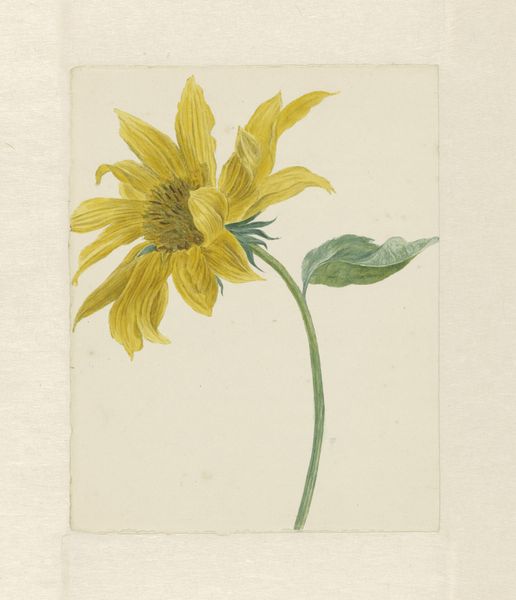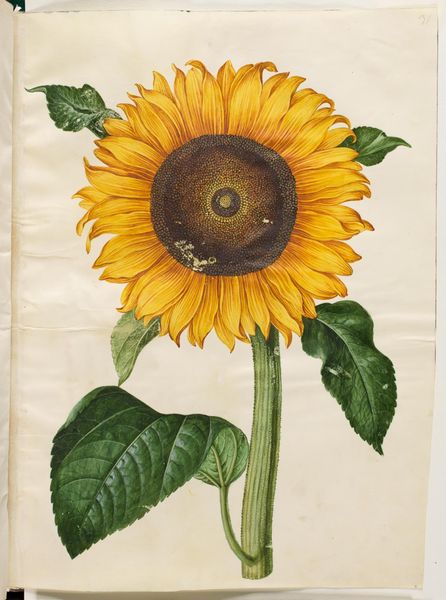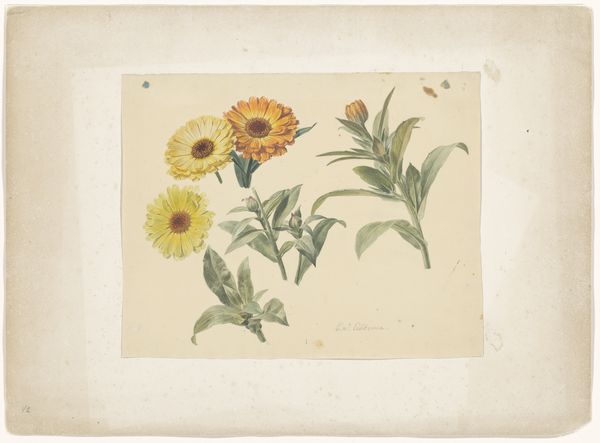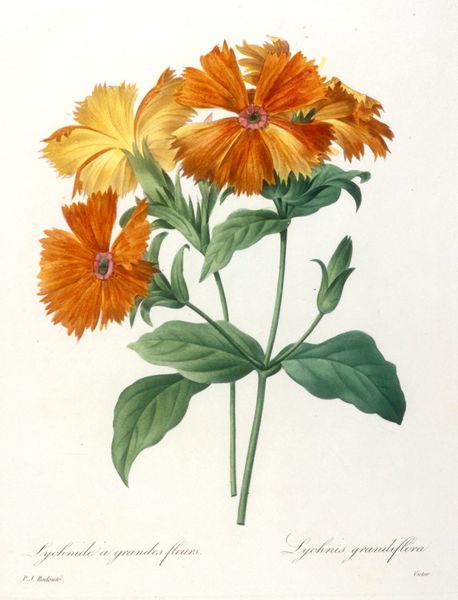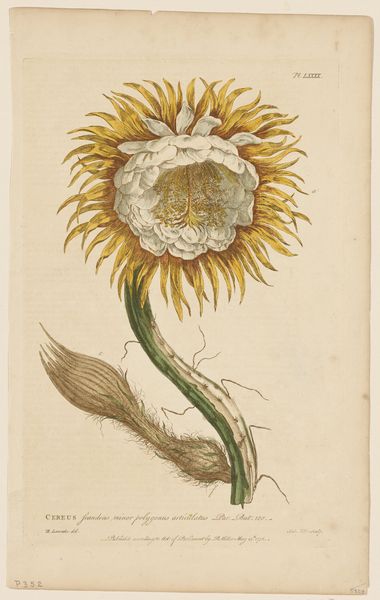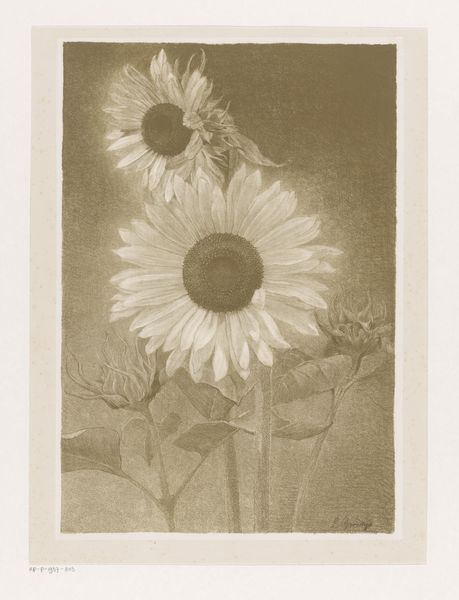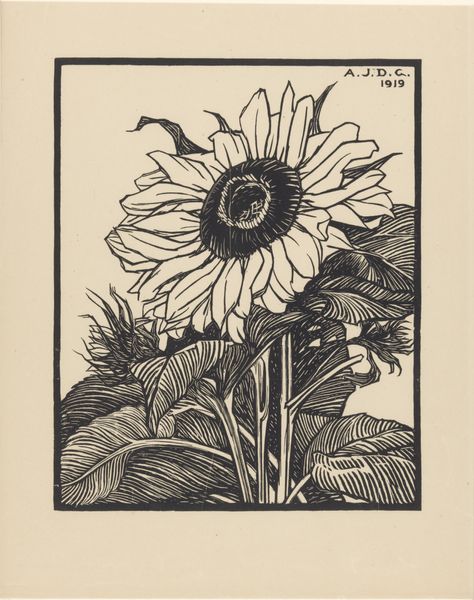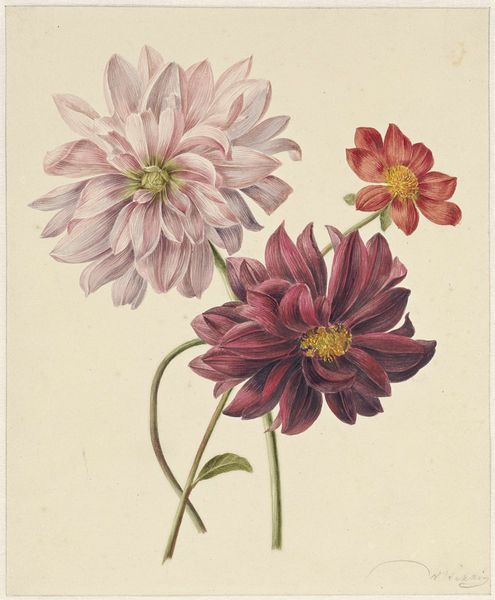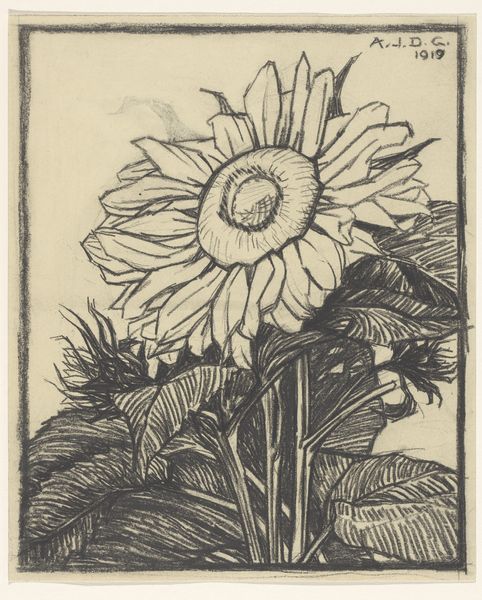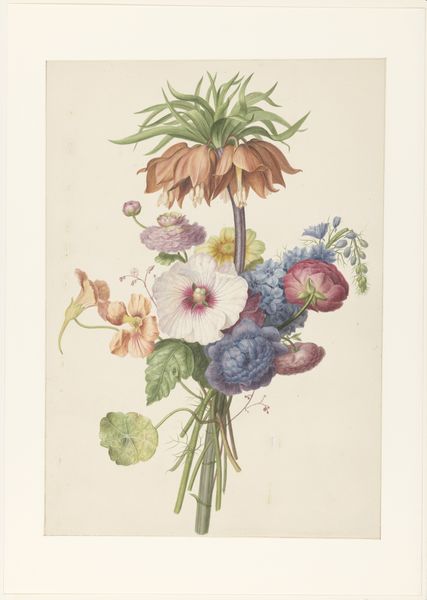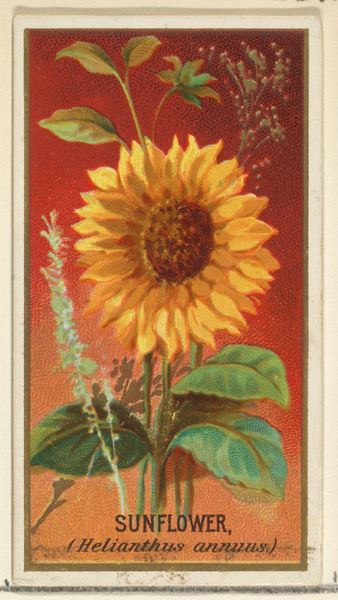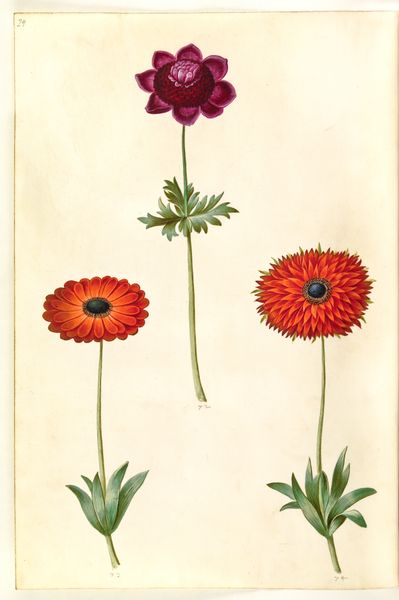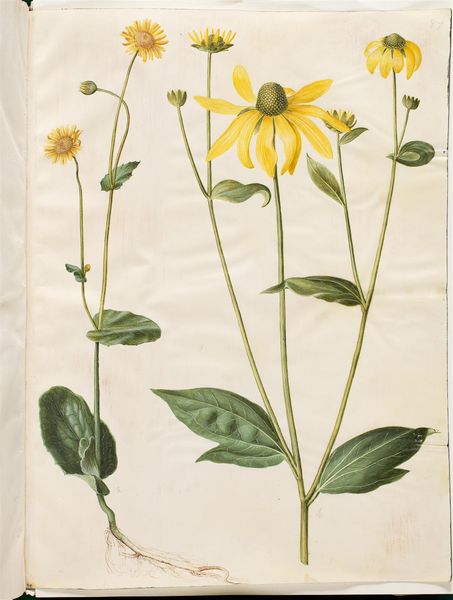
drawing, print, paper, watercolor
#
drawing
# print
#
landscape
#
paper
#
watercolor
#
romanticism
#
france
#
watercolour illustration
#
botanical art
#
watercolor
Dimensions: 19 x 12 3/8 in. (48.26 x 31.43 cm) (plate)
Copyright: Public Domain
Louis Charles Ruotte made this "Study of Sunflowers" as a print, using a metal plate to transfer the image to paper. Notice how the plate's edges define the composition. This wasn't just a matter of illustrating a pretty flower. In the 1700s, such prints were important scientific documents. The method Ruotte used, called etching, allowed for precise detail. He would have coated a metal plate, scratched the image into it, then bathed the plate in acid, which bit away at the exposed lines. Ink would then be applied and the plate pressed onto paper. The resulting image has a crispness that aligns with the Enlightenment's focus on empirical observation. It’s easy to think of art and science as separate, but here, they are intertwined, both relying on skilled handwork to advance knowledge and appreciation of the natural world. This piece reminds us that seeing is also a form of making.
Comments
minneapolisinstituteofart almost 2 years ago
⋮
Botanical illustrators working in the fifteenth and sixteenth centuries devoted themselves to the medicinal qualities of plants and sought to render plant structure and function as precisely as they could. Later, European explorers brought specimens back from exotic locales, and artists carefully reproduced them for an audience fascinated by new discoveries. By the eighteenth and nineteenth centuries, artists had shifted their emphasis from scientific illustration to the innate beauty of the plant or flower. The Minneapolis Institute of Arts is fortunate to possess an impressive collection of more than 2,000 botanical prints and drawings.
Join the conversation
Join millions of artists and users on Artera today and experience the ultimate creative platform.

